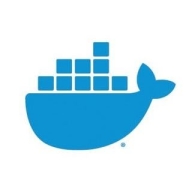

Apiiro and Docker are complementary products in software development and deployment. Docker often has the upper hand due to its extensive features that appeal to developers, even with Apiiro's competitive pricing and support.
Features:Apiiro focuses on security management, providing comprehensive visibility and insights into code risk during development. Docker is known for containerization capabilities, enabling developers to build, ship, and run applications in isolated environments. Docker also offers software development automation, enhancing its versatility compared to Apiiro's specialized security focus.
Ease of Deployment and Customer Service:Docker's deployment model uses container technology, simplifying application management and scalability, supported by a strong community and extensive resources. Apiiro provides tailored support, focusing on security improvements. Nevertheless, Docker is perceived to have a smoother deployment process due to its wide adoption and documentation.
Pricing and ROI:Apiiro offers a cost-effective solution with competitive pricing, emphasizing security ROI through risk mitigation. Docker may involve higher initial costs but offers significant ROI through operational efficiencies and application deployment flexibility. Docker's ROI is valued for long-term benefits in software operations, while Apiiro offers immediate security advantages.
| Product | Market Share (%) |
|---|---|
| Docker | 4.4% |
| Apiiro | 4.5% |
| Other | 91.1% |


| Company Size | Count |
|---|---|
| Small Business | 22 |
| Midsize Enterprise | 4 |
| Large Enterprise | 34 |
Apiiro is the leader in application security posture management (ASPM), unifying risk visibility, prioritization, and remediation with deep code analysis and runtime context.
Companies like Morgan Stanley, SoFi, Rakuten, and Navan leverage Apiiro's ASPM to...
Get complete application and risk visibility: Apiiro takes a deep, code-based approach to ASPM. Its Cloud Application Security Platform analyzes source code and pulls in runtime context to build a continuous, graph-based inventory of application and software supply chain components.
Prioritize risks with code-to-runtime context: With its proprietary Risk Graph™️, Apiiro contextualizes security alerts from third-party tools and native security solutions based on the likelihood and impact of risk to uniquely minimize alert backlogs and triage time by 95%.
Fix and prevent risks that matter—faster: By tying risks to code owners, providing LLM-enriched remediation guidance, and embedding risk-based guardrails directly into developer tools and workflows, Apiiro improves remediation times (MTTR) by up to 85%.
Apiiro's native security solutions include API security testing in code, secrets detection and validation, software bill of materials (SBOM) generation, sensitive data exposure prevention, software composition analysis (SCA), and CI/CD and SCM security.
Docker is a versatile container platform used for running and deploying applications in isolated environments, ensuring consistency across development, testing, and production.
Docker offers solutions for containerizing applications, automating deployments, and managing infrastructure through its robust platform. It supports CI/CD workflows, provides a development platform for container management, and simplifies the setup by using streamlined tools. Organizations leverage Docker for building microservices, running UI applications, deploying web services, and setting up secure environments. It also facilitates managing containers via Kubernetes and creating development stacks for enhanced productivity.
What are Docker's key features?Industries implement Docker for CI/CD pipelines, scaling services, and improving resource utilization. Tech companies use Docker for building and deploying their software in isolated environments. Finance and healthcare sectors deploy applications securely, ensuring compliance with regulatory standards. Educational institutions set up consistent development environments for coding labs and training students in advanced technologies.
We monitor all Software Supply Chain Security reviews to prevent fraudulent reviews and keep review quality high. We do not post reviews by company employees or direct competitors. We validate each review for authenticity via cross-reference with LinkedIn, and personal follow-up with the reviewer when necessary.